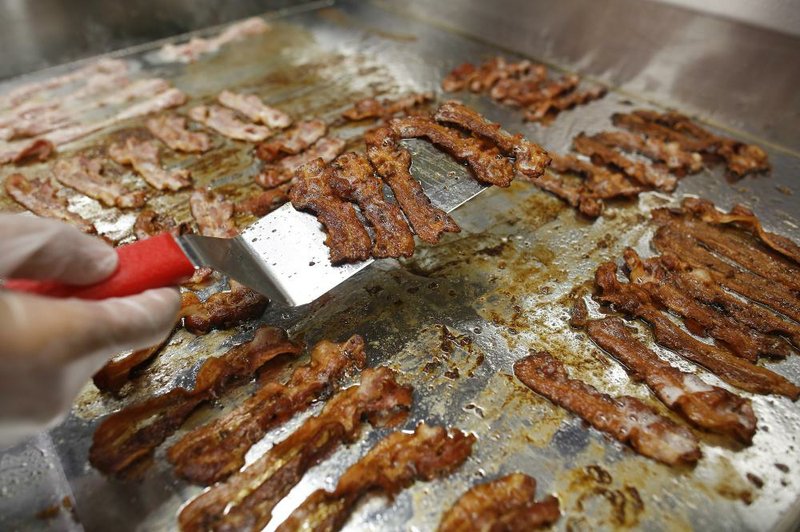With images of pigs and barbecued meats tattooed on his left calf, Brian Polak is doing what he can to cope with the highest price of bacon in three decades. The 41-year-old self-proclaimed "baconholic" now often cures his own at home to help reduce costs.
"A day doesn't go by where I don't have at least a strip," said Polak, a senior program manager for AT&T Inc. who lives in Carol Stream, Ill. "I don't think I could ever cut it completely out."
A declining supply of pigs, the result of a deadly virus that spread across 30 states, has pushed up retail bacon prices 10 percent in 2014 to $6.10 a pound in June, the highest since at least 1980, government data show.
Wholesale pork-belly costs doubled, reaching a record $2.03 a pound in April, according to the U.S. Department of Agriculture.
Consumers like Polak aren't cutting back. Bacon sales in U.S. outlets tracked by Nielsen, a New York-based global measurement company, rose 11 percent to $4.2 billion in the 12 months ended July 5. That's 40 percent more than in the same period in 2009-2010. Costs may peak this month, Steve Meyer, president of Des Moines, Iowa-based Paragon Economics Inc., said in a July 25 interview.
"I don't think we're going to see real damage to bacon demand at all," said Meyer, who expects hog slaughter to drop by about 10.5 percent this month as the most significant losses from the virus are realized.
Hog slaughter through Saturday fell 4.8 percent from a year earlier after pig losses from the deadly porcine epidemic diarrhea virus. Hog and pork prices will continue to break records through the rest of the year in countries that have seen outbreaks of the virus, including the U.S. and Mexico, Rabobank International said in a report emailed July 25.
Lean-hog futures gained as much as 56 percent this year to a record $1.33 a pound in March on the Chicago Mercantile Exchange. On Tuesday, the most-active contract dropped 1.9 percent to $1.07 a pound in morning trading. That's a 19 percent increase for the year, the third-largest advance in the 22-member Bloomberg Commodity Index.
Higher prices are having a bigger effect on profit margins for restaurants including St. Louis-based Panera Bread Co. than on consumer demand. Bacon prices rose as much as 23 percent in the second quarter at Panera Bread as supplies decreased, adding to "unexpected food cost inflation," Chief Financial Officer Roger Matthews said on a July 30 earnings call.
Paddy Long's, a bacon and beer bar in Chicago, uses about 700 pounds of the meat each week in items including "The Bomb," a $12.95 sandwich filled with spicy sausage, pork and beef wrapped in brown-sugar bacon and slow cooked on a pig roaster. Menu prices haven't gone up yet, although co-owner Pat Berger said he is considering it.
"We would never mess with the formula that's working at Paddy Long's," Berger said last month. "Bacon is what brings everybody in the door."
That's because bacon has the ideal combination of salt and fat, said Jennifer McLagan, the Toronto-based author of Fat: An Appreciation of a Misunderstood Ingredient, with Recipes. This year, 68.1 percent of all restaurants list bacon in at least one menu item, up from 62.4 percent in 2005, according to Datassential, a Chicago-based company that tracks U.S. trends.
Pork production this year will drop 1.8 percent to 22.8 billion pounds, the USDA said July 11.
Output is likely to rebound as lower feed costs give producers an incentive to expand herds, Michael Swanson, senior agricultural economist at Wells Fargo & Co. in Minneapolis, said by phone July 22. Producers have raised hogs to heavier weights, helping to offset lower slaughter rates. Futures dropped 22 percent in July, and spot pork-belly prices are down 34 percent from their April highs.
Warehouses have stockpiled bacon, with frozen inventories in June reaching 84 million pounds, almost double the amount from a year earlier, USDA data show. The amount in freezers is still close to the 88 million pounds held in February, which was the largest amount since 2008.
Business on 08/06/2014
